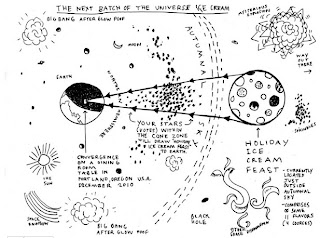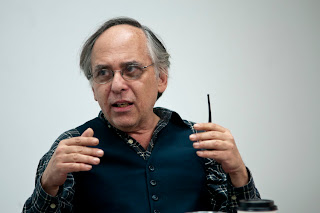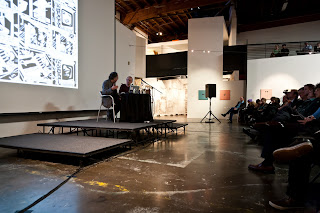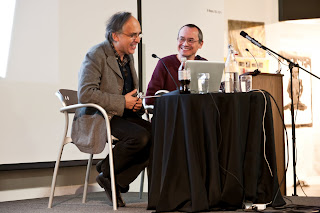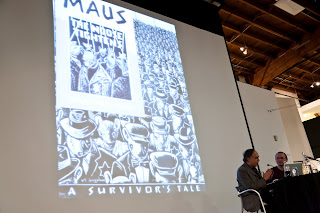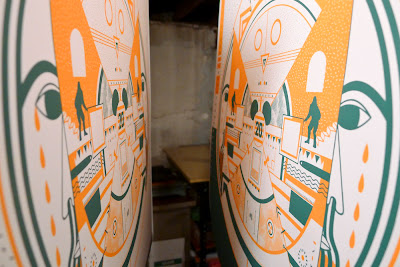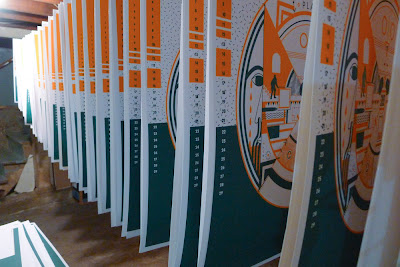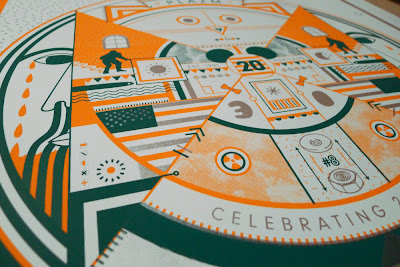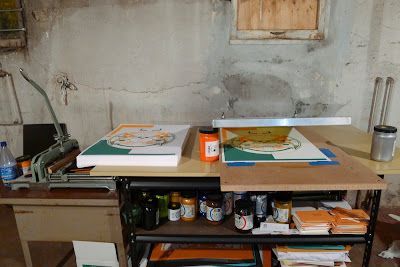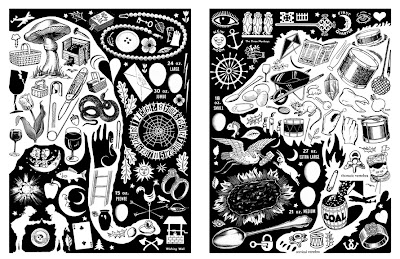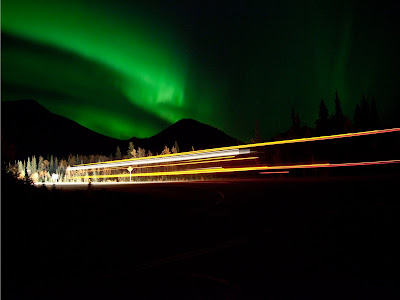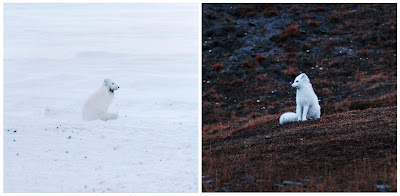In December 1994, I resigned as Managing Editor of Plazm to attend graduate school to become a teacher. Two reasons: 1) I’d wanted to teach since I was in the second grade; 2) we still weren’t making money publishing Plazm, and making a magazine all day then working night shifts at Mcmenamins to buy food and pay for Plazm was getting old. That said, I never left Plazm, at least not in my heart.
In March 2010, I quit teaching. Two reasons: 1) burn-out; 2) to attend graduate school in Environmental Studies, hopefully to work in Environmental journalism. About that time, Josh and Tiffany graciously asked me to blog for the magazine. Here goes…
I posted this piece last spring on my personal blog. I’m using it as my first post here because it ties to a topic we covered in Plazm 5, in 1993. Some of you will remember where you were when JFK was shot; some of you will remember where you were when Elvis died, and many of you will remember where you were when Kurt Cobain committed suicide. I will never forget calling Josh when I heard on the news that NAFTA had passed. This piece is a reflection on how creativity, in this case fabric art, can counteract political wrong-doing.
Alabama Chanin, Textile Arts, Oral Tradition, and celebrating the everyday…
I.
I am a denizen of Powell’s books. Last night, I attended the lecture about the vintage quilts hanging on the gallery wall there, given by Natalie Chanin of Alabama Chanin, a sustainable design firm.
In the hour that Chanin spoke, she warmed my heart with the reminder of the rich traditions we have in America, and that we can hold on to them when we practice sustainability, which is what my grandparents would have called “simple living.” Chanin’s presentation was so rich and deep and wandered nowhere near –isms(as in environmentalism), nor did she focus on the buzz words of social justice. But really, her work is just that: creative, historical environmental social justice. The words she used over and over again were “farm,” “tradition,” “cultural preservation,” “oral histories,” “generations,” and “forever.” This is the stuff of sustainability.
After a brief introduction of herself and her training and experience, Chanin state that, during a time when her job in the fashion industry required three-month stints in India, she had seen “things people should never see being done to another human–the greatest atrocities to mankind– for a garment.” Later, she commented that the fashion industry is the largest polluter on the planet. The clothing she creates now is all done by hand. All of the cotton is 100% organic, grown in Texas, spun in Texas and Mississippi, and all of the garments are hand-sewn by quilters in Alabama and surrounding Southern states. Alabama Chanin is a zero waste business.
When I asked her about environmental issues, Chanin replied that she thinks of sustainability in terms of sustenance: food, shelter, clothing. If we can change how we get done these three things, we’ll meet [environmental obligations].
Chanin can tell you who made your garment, on what day, how long it took, where the raw material was grown, and a bit about the life and history of the woman who put needle to fiber.
In her work, Chanin has made a commitment to community and tradition, first showing up in a documentary film, Stitch, then as collected oral histories, in which she aims to “embrace all of it that is the history of the South, to sustain tradition, and to document beauty.” In her anecdote about the quilts on the wall at Powell’s she explained that, after making the film, quilts began showing up on her doorstep, like squash in the summer. These are “garbage quilts,” meaning they would have been used to cover stored furniture in the barn, or to lay upon while under a car changing the oil.
Chanin, in her return to Alabama from the fashion epicenter of NYC, found a community “decimated by NAFTA.” She found women who had worked their whole lives as proud, skilled factory workers. She contracted them. Today they produce hand-stitched, American-made garments that are, in the fashion world, considered couture. As she said, “It can be done in America; this is part of our national security.”
At the end of the hour, Chanin read a quotation about textiles and needles as the voice of women’s history in America, and sent us home with this thought, “making is human work…”.
II.
I came home, dug out my sewing machine, and hemmed the top I’ve been meaning to hem so that I can give it to Theresa because it will look better on her than on me. I thought long and hard about my own love of clothes, and the piles of them I’ve thrown away over the years. I mean piles. I thought of my grandmother, my aunt, and my mom learning how to sew on polyester, and how so many of my clothes were home-made when I was little. Of how grandma Hazel made all my Barbie’s clothes—to include a pearl colored satin dress and mink stole. Of my Grandma Neva’s magical button box that I played with on every visit to her home when I was a little girl. And I remembered the big quilting frame in my sister Gayel’s guest room, for years and years of my childhood.
III.
And then I remembered this writing workshop exercise, given by one of my Lewis and Clark professors, Gail Black, at a teaching in-service. We were to read the following poem, locate the source of meaning within the poem, and then write for awhile. What follows is what I did that day…
My Mother Pieced Quilts
by Teresa Paloma Acosta, 1978. Source unknown.
they were just meant as covers
in winters
as weapons
against pounding January winds
but it was just that every morning I awoke to these
October ripened canvases
passed my hand across their cloth faces
and began to wonder how you pieced
all these together
these strips of gentle communion cotton and flannel
nightgowns
wedding organdies
dime store velvets
how you shaped patterns square and oblong and round
positioned
balanced
then cemented them
with your thread
a steel needle
a thimble
how the thread darted in and out
galloping along the frayed edges, tucking them in
as you did us at night
oh how you stretched and turned and re-arranged
your michigan spring faded curtain pieces
my father’s santa fe work shirt
the summer denims, the tweeds of fall
in the evening you sat at your canvas
–our cracked linoleum floor the drawing board
me lounging on your arm
and you staking out the plan:
whether to put the lilac purple of easter against the red plaid of winter-going
into-spring
whether to mix a yellow with blue and white and paint the
corpus Christi noon when my father held your hand
whether to shape a five-point star from the
somber black silk you wore to grandmother’s funeral
you were the river current
carrying the roaring notes
forming them into pictures of a little boy reclining
a swallow flying
you were the caravan master at the reins
driving your threaded needle artillery across the mosaic cloth bridges
delivering yourself in separate testimonies
oh mother you plunged me sobbing and laughing
into our past
into the river crossing at five
into the spinach fields
into the plainview cotton rows
into tuberculosis wards
into braids and muslin dresses
sewn hard and taut to withstand the thrashings of twenty-five years
stretched out they lay
armed/ready/shouting/celebrating
knotted with love
the quilts sing on
My response, that day, which was probably about ten years ago, and was written while I was reading Henry Miller’s, The Air-Conditioned Nightmare, which may have informed my tone:
Where is the source of meaning? The essence of folk art. Glorification of the useful, the sturdy. Pre-consumerism, before the Nightmare, as Henry Miller would say, people had what was necessary. No disposability. Only sturdiness, durability, and purpose. These things, the things of life, took on lives of their own or became mirrors. What a drab world it would be without decoration. Eduardo Galeano speaks of memory as the truest form of history—and in parallel to his idea, quilts become the historical document of a family’s life–thoughtful, thorough, truthful. The thoroughness of the material as it was once new, worn in celebration, sorrow, toil. The piece that is left is the significance of those moments. The reality of the fabric mirrors the reality of living and when put together, these small things become life a family has lived. Folk art always tells of life.
Theresa Acosta’s poem is readily available online.

